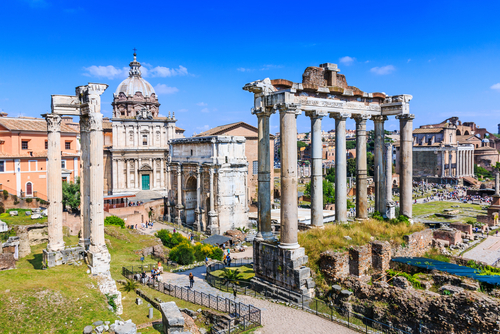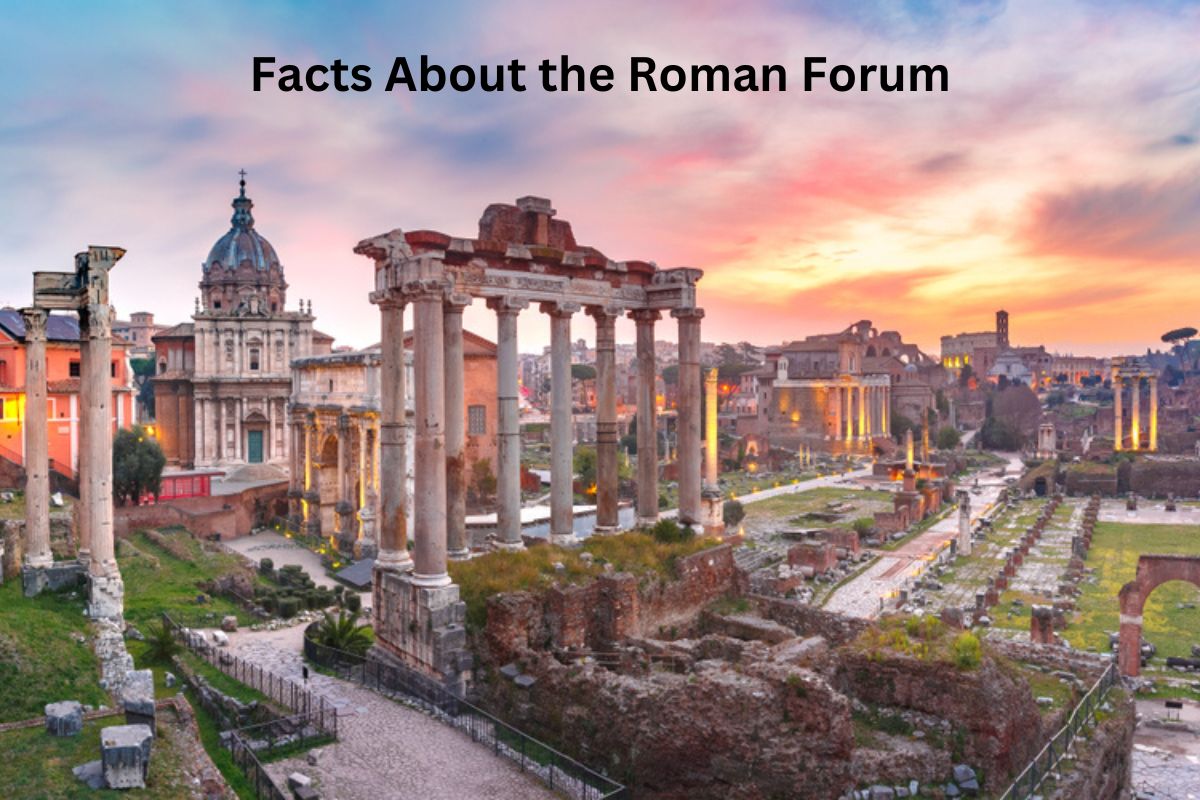The Roman Forum, also known as the Forum Romanum, holds a significant place in history as the heart of ancient Rome. It served as a bustling social, political, and religious center, playing a pivotal role in the public life of the Roman Empire for over a thousand years.
The Forum evolved over time, with structures dating back to the 7th century BCE, and expanded to accommodate the growing needs of the city.
It was the site of political activities, such as elections and Senate meetings, and housed temples dedicated to Roman deities.
The Forum also featured a vibrant marketplace and iconic structures like the Arch of Titus.
While it declined after the fall of the Western Roman Empire, the Forum’s ruins have been preserved and restored, allowing visitors to witness the grandeur and significance of ancient Rome.
The Roman Forum Facts
1. The Roman Forum was the social, political, and religious center of ancient Rome
The Roman Forum held immense significance in Roman society. It was the central gathering place where people from all walks of life would come together for various activities. It served as a venue for public speeches, political debates, and religious ceremonies.
The Forum was a focal point of Roman life and represented the power, prestige, and grandeur of the Roman Empire.

2. It developed and expanded over time, with structures dating back to the 7th century BCE
The Roman Forum’s origins can be traced back to the 7th century BCE when it was a marshy area known as the Velabrum. Over the centuries, the Forum underwent a gradual transformation as Rome grew and flourished.
Also Read: Pantheon Facts
Buildings and monuments were constructed, expanded, and modified to accommodate the evolving needs of the city and its citizens. The Forum expanded both vertically and horizontally, with multiple layers of structures built on top of one another.
3. The Forum was the site of political activities, such as elections and Senate meetings
As the political heart of Rome, the Forum played a vital role in the governance of the Roman Republic and later the Roman Empire. It was a space where political campaigns took place, and citizens gathered to vote during elections.
Additionally, the Senate, the most influential governing body, held its meetings in the Curia Julia, a prominent building within the Forum. Decisions made in the Forum had far-reaching consequences for the entire empire, making it a crucial hub of political power and influence.
4. It served as a bustling marketplace with various shops and traders
The Roman Forum was not only a center of politics and religion but also a vibrant commercial hub. The streets of the Forum were lined with tabernae, small shops or stalls, where merchants sold a wide range of goods and services.
These shops catered to the needs and desires of the Roman population, offering items such as clothing, jewelry, pottery, food, and even luxury items. The Forum attracted merchants from different regions, creating a diverse and lively marketplace where trade and economic activity thrived.
5. The Forum housed several temples dedicated to Roman gods and goddesses
Religion held immense importance in Roman society, and the Forum was home to several significant temples. These temples served as places of worship and were dedicated to various gods and goddesses of the Roman pantheon.
For example, the Temple of Saturn, one of the oldest and most important temples in the Forum, honored the god Saturn.
The Temple of Vesta, tended by the Vestal Virgins, was dedicated to the goddess Vesta, protector of the hearth and home. These temples were centers of religious rituals, sacrifices, and ceremonies, where the Romans sought divine favor and guidance.

6. The Arch of Titus, a triumphal arch, stands in the Forum, depicting scenes from the Siege of Jerusalem
The Arch of Titus is a triumphal arch located in the Roman Forum. It was built in 82 CE to commemorate the military victories of Emperor Titus, particularly the Siege of Jerusalem in 70 CE.
The arch features detailed reliefs that depict scenes of the Roman army’s triumph and the spoils taken from the Jewish Temple, including the Menorah.
The Arch of Titus stands as a symbol of military achievement and served to glorify and memorialize the successes of the Roman Empire. It is considered a significant architectural and historical landmark in the Roman Forum.
7. The Curia Julia was the meeting place of the Roman Senate
The Curia Julia, a rectangular building located in the Roman Forum, served as the meeting place for the Roman Senate. It was constructed during the reign of Julius Caesar in 44 BCE and underwent subsequent renovations.
The Curia Julia was where the senators, the most influential and powerful political figures in Rome, gathered to discuss and make decisions on matters of governance.
The architecture of the Curia reflected the importance and authority of the Senate, and its interior was adorned with decorative elements, including statues and paintings.
8. The Rostra was a platform where public speakers addressed the citizens
The Rostra was an elevated platform situated in the Roman Forum. It served as a prominent stage from which politicians, orators, and other public figures addressed the Roman citizens.
The name “Rostra” derived from the Latin word for “beaks,” as the platform was adorned with the prows of captured enemy ships, symbolizing Rome’s naval victories.
The Rostra became a symbol of free speech and political expression, providing a space for persuasive speeches, debates, and the dissemination of information to the Roman populace.
9. The Forum included basilicas, large public buildings used for legal and commercial purposes
The Roman Forum contained several basilicas, which were grand, multipurpose buildings. These basilicas were distinct from the religious basilicas commonly found in later Christian architecture. They served as public spaces for legal proceedings, commercial transactions, and other administrative activities.
Basilicas featured large interior spaces, typically with a central nave flanked by aisles, and were often adorned with columns, statues, and intricate architectural details. They provided shelter, space, and amenities for various civic functions, reflecting the importance of law and commerce in Roman society.
10. Over time, the Forum declined but has been preserved and restored as an archaeological site
Following the decline of the Western Roman Empire, the Roman Forum gradually fell into disuse and neglect. It suffered from natural disasters, including earthquakes and fires, as well as vandalism and looting.
However, in modern times, efforts have been made to preserve and restore the ruins of the Forum, transforming it into an important archaeological site.
Archaeologists, historians, and conservationists have worked to uncover, study, and protect the remaining structures and artifacts. Today, visitors can explore the ruins, gaining insights into the rich history and grandeur of ancient Rome.
The Roman Forum stands as a testament to the remarkable achievements of the Roman civilization and serves as a popular tourist destination, allowing visitors to step back in time and experience the legacy of this extraordinary ancient city.
